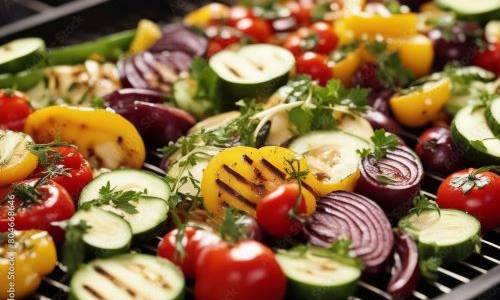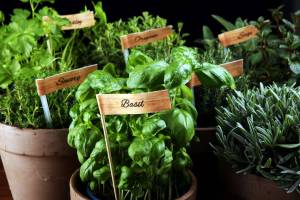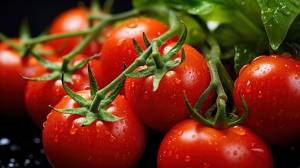What to Grow in a Greenhouse in August


August is an exciting time for greenhouse gardening. The summer heat creates ideal growing conditions for a variety of plants, while the controlled environment of a greenhouse allows for extended growing seasons and protection from unpredictable weather. Whether you’re looking to extend your summer harvest or start planning for autumn, here’s your comprehensive guide to what you can grow in your greenhouse in August.
Why Grow in a Greenhouse?
Greenhouses offer several benefits, including:
- Extended Growing Season: You can start plants earlier in the spring and keep them going later into the autumn.
- Controlled Environment: Protection from pests, diseases, and unpredictable weather conditions.
- Optimised Growth: Better control over temperature, humidity, and light conditions, which can lead to healthier plants and higher yields.
What to Grow in August
In August, your greenhouse can support a diverse range of plants. Here are some excellent choices:
Vegetables
- Tomatoes:
- Varieties: ‘Gardener’s Delight’, ‘Alicante’, ‘Sungold’.
- Care: Ensure regular watering and feeding with a high-potassium fertiliser. Keep the greenhouse ventilated to prevent fungal diseases.
- Harvesting: Pick tomatoes when they are fully ripe for the best flavour. This is usually when they are vibrant in colour and slightly soft to the touch.
- Cucumbers:
- Varieties: ‘Telegraph’, ‘Marketmore’, ‘Mini Munch’.
- Care: Maintain high humidity and keep the soil consistently moist. Provide support with trellises or netting.
- Harvesting: Harvest cucumbers when they reach the desired size, usually 15-20 cm for slicing varieties and smaller for pickling types.
- Peppers (Sweet and Hot):
- Varieties: ‘California Wonder’ (sweet), ‘Jalapeño’ (hot), ‘Habanero’ (hot).
- Care: Peppers thrive in well-drained soil with consistent moisture. Feed regularly with a balanced fertiliser.
- Harvesting: Pick when they reach full size and colour, which can vary depending on the variety. Harvesting frequently encourages more fruit production.
- Aubergines:
- Varieties: ‘Black Beauty’, ‘Long Purple’, ‘Thai Green’.
- Care: Aubergines need warmth, so maintain temperatures above 20°C. Water consistently and provide support for the plants.
- Harvesting: Harvest when the fruits are glossy and firm, but before they start to soften. Use a sharp knife to cut the fruit, leaving a short stem attached.
- Salad Greens:
- Varieties: ‘Lollo Rosso’ (lettuce), ‘Rocket’, ‘Mizuna’, ‘Swiss Chard’.
- Care: Grow in trays or directly in the greenhouse soil. Keep the soil moist and harvest leaves regularly to encourage continuous growth.
- Harvesting: Pick leaves when they are young and tender for the best flavour.
Herbs
- Basil:
- Varieties: ‘Genovese’, ‘Thai Basil’, ‘Purple Basil’.

- Harvesting: Pick leaves as needed, starting from the top of the plant. Regular harvesting encourages more growth.
- Coriander:
- Varieties: ‘Leisure’, ‘Calypso’, ‘Santo’.
- Care: Coriander prefers cooler temperatures and consistent moisture. It can bolt quickly in high heat, so keep an eye on it.
- Harvesting: Harvest leaves when they are young and tender. If it starts to bolt, you can also harvest the seeds for culinary use.
- Parsley:
- Varieties: ‘Flat-Leaf’, ‘Curly-Leaf’.
- Care: Parsley thrives in well-drained soil and partial shade. Water regularly to keep the soil moist.
- Harvesting: Cut the outer leaves as needed, allowing the inner leaves to continue growing.
Common Pests and Diseases
Even in a controlled environment like a greenhouse, pests and diseases can still be a problem. Here are some common issues and how to manage them:
- Aphids:
- Identification: Small, soft-bodied insects found on the undersides of leaves.
- Control: Introduce beneficial insects like ladybirds or use insecticidal soap.
- Whiteflies:
- Identification: Tiny white insects that fly up when plants are disturbed.
- Control: Use yellow sticky traps and introduce natural predators like Encarsia formosa.
- Spider Mites:
- Identification: Tiny red or yellow mites, often causing fine webbing on plants.
- Control: Increase humidity and use miticides or natural predators like Phytoseiulus persimilis.
- Botrytis (Grey Mould):
- Identification: Grey, fuzzy mould on leaves, stems, and fruit.
- Control: Improve air circulation, remove affected plant parts, and use fungicides if necessary.
- Powdery Mildew:
- Identification: White, powdery spots on leaves and stems.
- Control: Ensure good ventilation, avoid overhead watering, and use fungicides or natural remedies like neem oil.
Care of Greenhouse Plants
To ensure your greenhouse plants thrive in August, follow these care tips:
- Watering:
- Water consistently and deeply, aiming to keep the soil evenly moist. Avoid waterlogging, as this can lead to root rot.
- Water early in the day to reduce evaporation and allow plants to dry before nightfall, which helps prevent diseases.
- Feeding:
- Use a balanced fertiliser to provide essential nutrients. For fruiting plants like tomatoes and peppers, switch to a high-potassium fertiliser once they start to flower.
- Apply fertiliser according to the manufacturer’s instructions to avoid over-fertilisation.
- Ventilation:
- Maintain good airflow to prevent heat buildup and reduce humidity levels, which can lead to fungal diseases.
- Open vents and doors during the day and consider using fans if necessary.
- Pruning and Training:
- Prune plants regularly to remove dead or diseased foliage and to promote air circulation.
- Train climbing plants like cucumbers and tomatoes to grow vertically using trellises or supports to save space and improve light exposure.
- Pest and Disease Monitoring:
- Inspect plants regularly for signs of pests or diseases. Early detection allows for quicker and more effective management.
- Implement integrated pest management (IPM) practices, combining biological, cultural, and chemical methods for sustainable pest control.
Harvesting Tips
Harvesting at the right time ensures the best flavour and quality of your produce:
- Tomatoes: Pick when fully coloured and slightly soft. Avoid refrigerating tomatoes, as it can affect their flavour.
- Cucumbers: Harvest when they reach the desired size. Overripe cucumbers can become bitter and seedy.
- Peppers: Harvest when they reach their full size and colour. Sweet peppers can be harvested green or left to mature to red, yellow, or orange.
- Aubergines: Harvest when the fruits are glossy and firm. Overripe aubergines can become bitter and tough.
- Salad Greens: Harvest leaves as needed, starting from the outer edges. Regular harvesting encourages continuous growth.
- Herbs: Harvest herbs in the morning when the oils are most concentrated for the best flavour. Cut stems just above a leaf node to encourage bushy growth.
Additional Growing Tips
- Succession Planting: To ensure a continuous supply of fresh produce, sow seeds for fast-growing crops like salad greens and herbs every few weeks.
- Companion Planting: Grow plants that benefit each other together. For example, basil planted near tomatoes can improve their flavour and repel pests.
- Soil Health: Rotate crops and add organic matter to maintain healthy soil. Avoid planting the same crops in the same spot year after year to prevent soil-borne diseases.
- Mulching: Apply mulch to help retain soil moisture, suppress weeds, and regulate soil temperature.
- Season Extension: Use shade cloth or greenhouse paint to reduce temperatures during hot days and extend the growing season into autumn with heaters or insulation.
Conclusion

August is a bustling month for greenhouse gardening, offering ample opportunities to grow a variety of vegetables, herbs, and salad greens.By choosing the right varieties, providing proper care, and managing pests effectively, you can enjoy a bountiful and continuous harvest. Whether you’re a seasoned gardener or just starting, these tips will help you make the most of your greenhouse in August.
